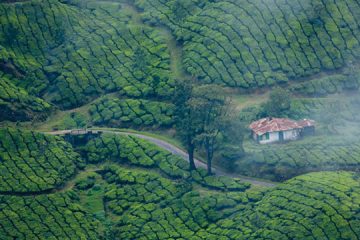Discovering Darjeeling: The Queen of the Hills

Introduction
Darjeeling, a beautiful town located in the northern part of West Bengal, India, is celebrated for its stunning landscapes, pleasant climate, and lush tea gardens. Nestled in the foothills of the Himalayas, it serves as a popular destination for tourists seeking both adventure and relaxation. The significance of Darjeeling extends beyond its scenic vistas; it plays a crucial role in the economy of India, primarily through its world-renowned tea production. The town’s distinct culture and heritage further enhance its relevance, making it a place of interest for both domestic and international travelers.
Significant Events and Developments
In recent years, Darjeeling has witnessed a surge in tourism, reopening for travelers after the pandemic restrictions were lifted. As of 2023, it has become a focal point for adventure tourism, with trekking and mountain biking gaining popularity among visitors. Local authorities have introduced several initiatives to improve infrastructure and promote sustainable tourism. The Darjeeling Himalayan Railway, also known as the toy train, remains a UNESCO World Heritage Site and continues to draw tourists with its charm and historical significance.
Furthermore, the tea industry in Darjeeling has been recovering from various challenges, including climate change and the economic impacts of the COVID-19 pandemic. Reports indicate that Darjeeling tea exports are on the rise again, contributing significantly to the local economy. The Darjeeling Tea Association has actively promoted the region’s tea, ensuring that it maintains its designation as a geographical indication (GI) product, which protects its unique quality and authenticity.
Cultural Heritage and Attractions
The cultural fabric of Darjeeling is a blend of diverse ethnic communities, including the Lepchas, Bhutias, and Gorkhas. Festivals such as Dasain and Tihar are celebrated with great enthusiasm, showcasing the region’s rich traditions. Tourists can explore various attractions, including the magnificent Kanchenjunga view, Buddhist monasteries like the Ghum Monastery, and botanical gardens that exhibit the region’s unique flora.
Conclusion
In conclusion, Darjeeling stands as a symbol of natural beauty and cultural richness in India. With its thriving tea industry, picturesque landscapes, and vibrant cultural heritage, it continues to attract visitors from across the globe. The local government’s commitment to sustainable tourism and infrastructure development suggests a promising future for both the residents and the economy of this remarkable hill station. As Darjeeling embraces a new wave of tourism, it is poised to remain a coveted destination for adventurers and culture enthusiasts alike.









